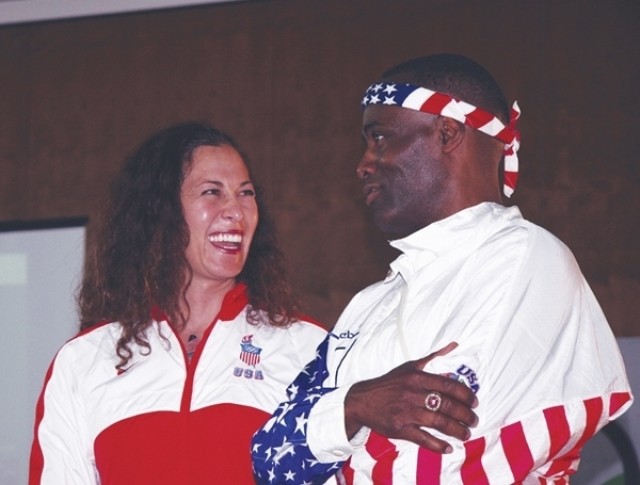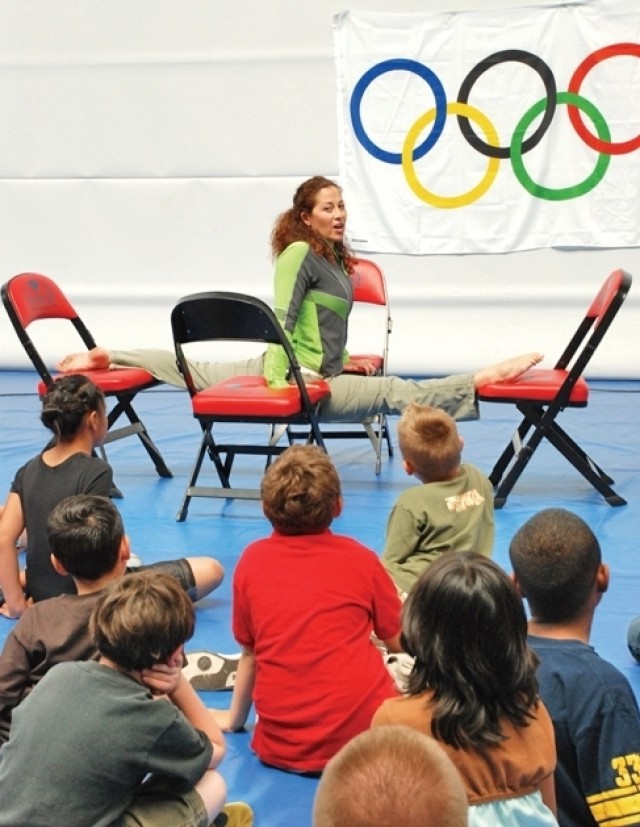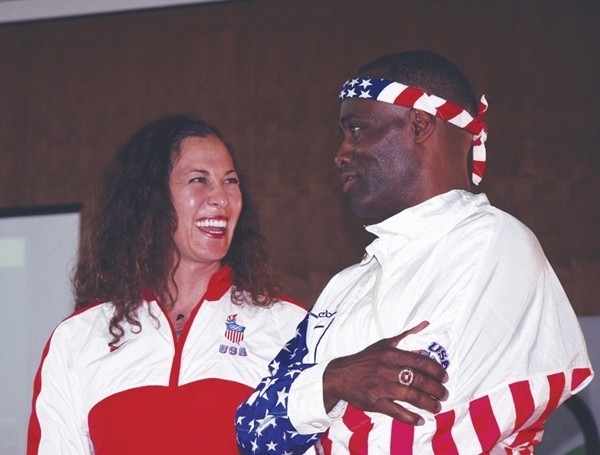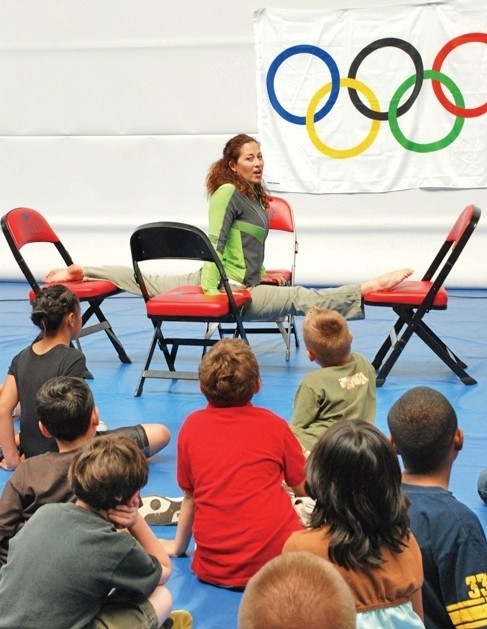HEIDELBERG, Germany - A visit to Germany from two world-class athletes stretched children at U.S. Army Garrison Wiesbaden and USAG Grafenwoehr in a few new directions.
Nathalie Bartleson and Buddy Lee - both former U.S. Olympians - stopped by the installations' Child and Youth Services programs with a simple mission to inspire and teach.
The pair demonstrated different techniques fundamental to succeeding in any sport, while also promoting fitness for life. Both advised their young audiences to first develop one simple skill that is necessary no matter what path they choose.
"You can't learn if you don't know how to listen," said Lee, a Greco-Roman wrestler who competed at the 1992 Summer Olympic Games in Barcelona, Spain, as he demonstrated jump rope skills that have earned him further career successes.
Lee took those rope skills and designed a training system that not only promotes a healthy lifestyle but also teaches life skills.
"What (the children) don't realize is that they're learning about life through jump rope," he said. "If they want to be good at something, they've got to be committed, they've got to be willing to practice, they've got to be patient, and they're going to have to educate themselves on how to do it the right way. Then, if they want to be better, they can never give up."
Thriving in her sport for two decades also required Bartleson to possess a high degree of litheness, which she demonstrated to the youngsters through various exercises.
"Stretching and flexibility are the keys to me (being) successful throughout my career," said Bartleson, a gold medalist member of the 1996 U.S. synchronized swimming team that competed in Atlanta.
Bartleson, who started out as a dancer and swimmer, said the road to Olympic gold had a little bit to do with timing - and a lot to do with parental encouragement.
"My mom was trying to get rid of a pain in her rear - (me)," said Bartleson, recalling a time when youth dancing activities were cancelled in her hometown of Walnut Creek, Calif.
Bartleson's mother, after reading about a championship synchronized swimming team training locally, asked if she was interested in trying that as a substitute. "My mom said it was either this or back to the babysitter," Bartleson said, "and I hated going to the sitter."
"It looks easy, but the water adds a totally different degree of difficulty," she said when asked how the sport compares to dancing or gymnastics. "Not only are you executing the various movements with precision (similar to gymnastics and dance), but you also have the added element of the water; you have to control your body and hold your breath while performing eight-count movements.
Bartleson said becoming part of the Olympic movement "was my inspiration; it is about peace and hope."
And her motto: "Do whatever it takes to do your best the right way. Winning is not everything, but being your best, the right way, is."
The two athletes' tour of Grafenwoehr, Wiesbaden and other Installation Management Command-Europe garrisons was coordinated with the Boys and Girls Clubs of America and the U.S. Olympic Committee.
Teresa Quinn-Vesely, BGCA regional service director, said she hopes Bartleson and Lee inspired the children to become more involved in physical fitness, a key component in the BGCA Triple Play program, which is designed to educate youth on health habits, good nutrition and physical fitness.
(Chrystal Smith is a member of USAG Wiesbaden Public Affairs; Mary Markos is a member of USAG Grafenwoehr Public Affairs)






Social Sharing